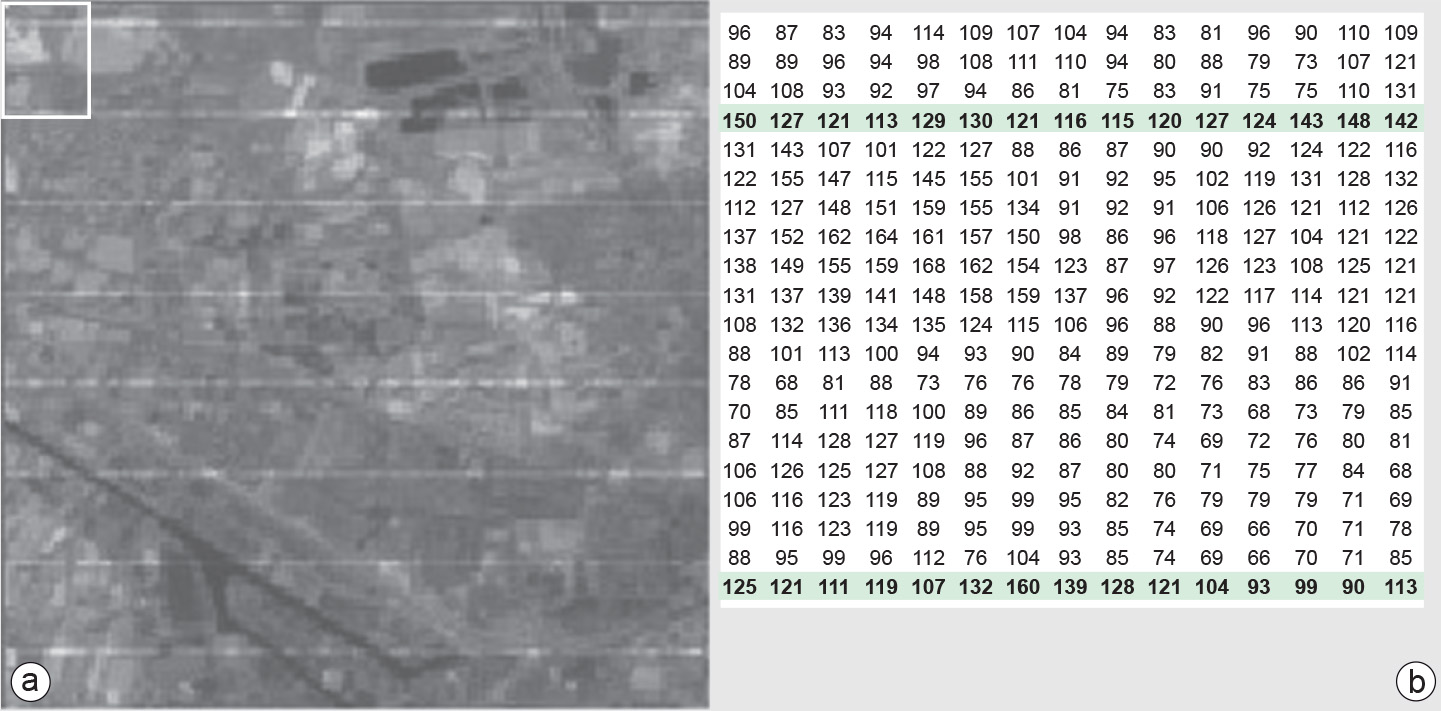Correction of line striping
Introduction
Line striping is far more common than line dropouts. Line striping often occurs as a result of non-identical detector response. Although the detectors for all satellite sensors are carefully calibrated and matched before the launch of the satellite, with time the response of some detectors may drift to higher or lower levels. As a result, every scan line recorded by that detector is brighter or darker than the other lines. It is important to understand that data are present in the defective lines, but these must be corrected to match the overall scene.

How to
Though several procedures can be adopted to correct this effect, the most popular one is histogram matching. Separate histograms corresponding to each detector unit are constructed and matched. Taking one response as standard, the gain (rate of increase of DNs) and offset (relative shift of mean) for all other detector units are suitably adjusted, and new DNs are computed and assigned. This yields a destriped image in which all DN values conform to the reference level and scale.
Prior knowledge
Outgoing relations
- Correction of line striping is a kind of Correction of imperfections of a sensor